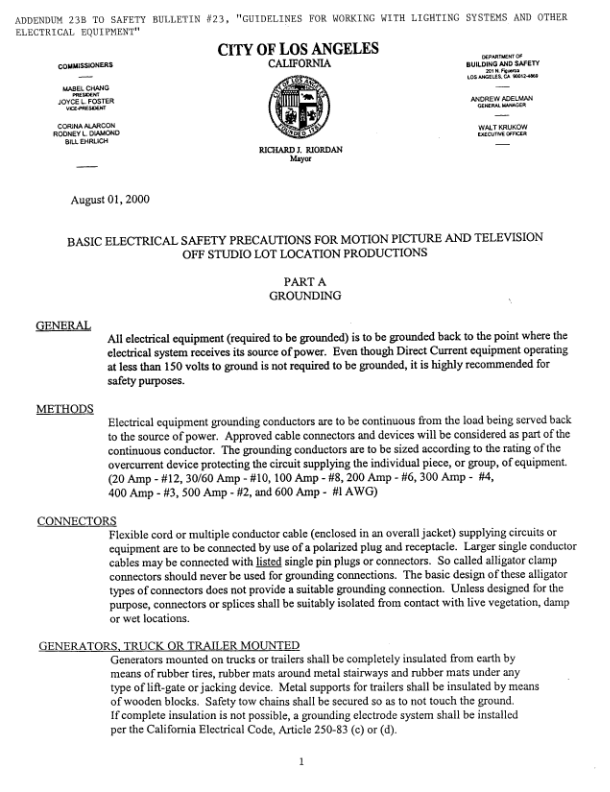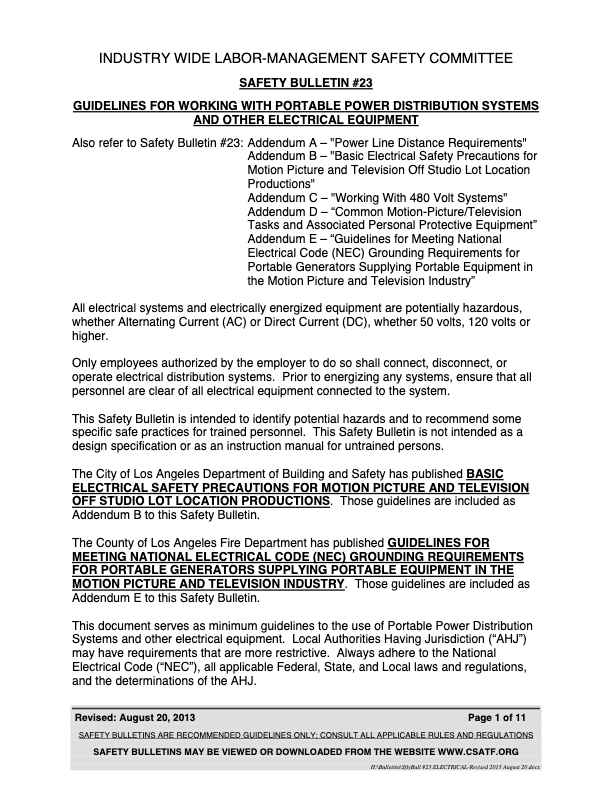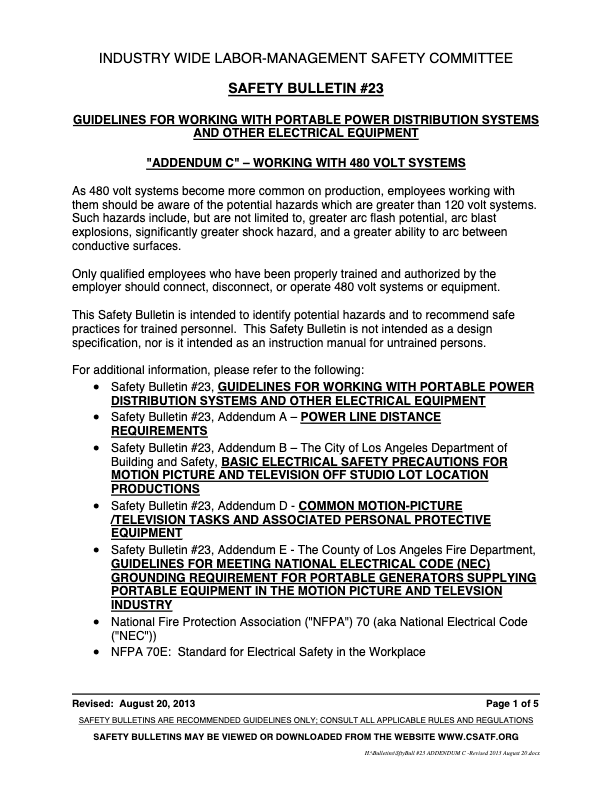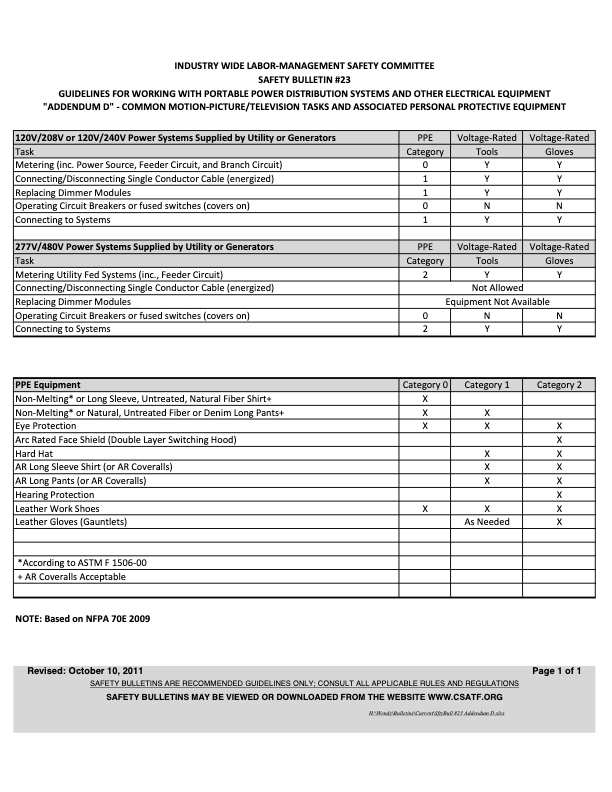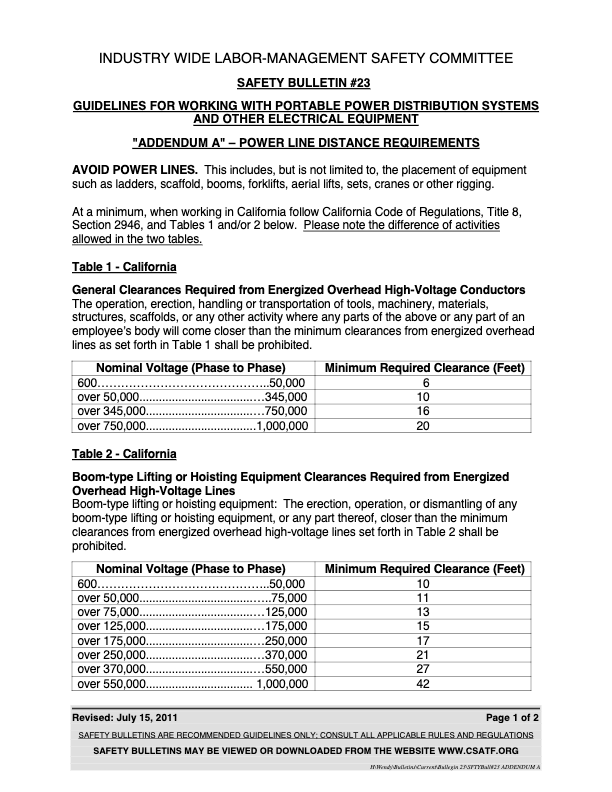Safety Bulletin

Guidelines
Guidelines for meeting National Electrical Code (NEC) Grounding Requirements for Portable Generators Supplying Portable Equipment in the Motion Picture and Television Industry
Single Generator
The frame of the generator mounted to a truck or trailer may serve as the grounding electrode (in place of the earth) for the portable power distribution system. A ground rod is not required if the generator units and vehicles they are mounted to are insulated from the earth.
Two or More Generators
- Where two or more portable generators are located within 20 feet or less of each other they shall be bonded together by a dedicated bonding conductor from generator to generator. The bonding conductor shall be copper and sized in accordance with NEC Table 250.122. A ground rod is not required if the generator units and vehicles they are mounted to are insulated from the earth.
- Generators shall be bonded together when two or more generators supply power to a common set where the portable equipment is in close proximity to each other (within 12 feet for interior sets, 20 feet for exterior sets).
Portable Generator Supplying Power to Portable Equipment in a Structure
- In a de-energized building the grounding requirements are the same as an exterior location.
- When a portable distribution system is brought into an energized structure, where structure power is not used for production power, bonding to the structure’s grounding electrode is not required.
Generator Supplying Portable Power in Combination with Structure Power
Using a portable power distribution system inside a structure in combination with the structure’s power supply, or where large metal equipment supplied by the structure’s power may come in contact with the portable power distribution system or equipment, requires the generator grounding conductor to be bonded to the structure’s grounding electrode, and the conductor shall be sized according to NEC 250.66. The grounding electrode is usually found at the structures electrical meter.
Generator Supplying Portable Power to Portable Equipment Attached to a Structure
Motion Picture and Television productions do not energize permanently installed systems that are no longer connected to utility power, unless supervised by a licensed electrician.
Connecting to Structures Utility Power
Only a qualified person shall perform tie-ins to premises wiring. Tie-ins need to be protected from contact, barricaded and have proper overcurrent protection.
Ground Fault Circuit Interrupter
NEC Section 530.6 allows short-term outdoor use of standard non-GFCI protected indoor portable stage and studio lighting equipment and portable power distribution equipment.
NEC Section 530.21 does not require GFCI protection for plugs and receptacles used in Motion Picture and Television Studios and on Locations.
GFCIs are devices intended for the protection of personnel only. The code requires GFCI protection for certain permanently installed receptacles on premises or permanent structure wiring (NEC Article 210) and on construction sites (NEC Article 590). Motion Picture and Television productions typically use GFCIs in wet conditions or when systems or energized devices come within 10 feet of water.
Portable Generators 5 Kilowatts or less (Putt-Putt)
These generators shall meet the same isolation and bonding requirements of larger portable generators.

